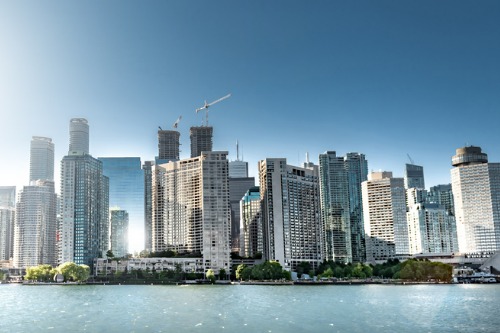Activity is heating up in rental housing markets across Canada, a troubling sign for affordability in cities with a chronic shortage of available units.
For years before COVID-19, markets from Vancouver to Prince Edward Island suffered from an unrelenting mix of weak rental construction, raging demand and rising rates. Bidding wars were not uncommon, echoing the buyer’s market.
The pandemic offered a slight reprieve in many cities as vacancies climbed and asking rates fell, owing partly to a drastic slowdown in population growth as immigration waned.
But the reprieve is proving short-lived. The average monthly rent for units listed on Rentals.ca was $1,721 in June, an increase of 2.7 per cent from April, though still lower than before COVID-19. Rents rose 2.5 per cent in May, the largest 12-month gain since early 2020, according to inflation data from Statistics Canada. During the six months prior, the average annual gain was just 0.8 per cent.
The coming months should see strong demand, as the country is poised for an influx of new immigrants, part of the federal government’s push to make up lost ground. And with universities set to resume in-person classes, more students are signing leases.
In effect, many cities are hurtling back to tight market conditions with meagre vacancies, putting a strain on tenants’ finances.
“We’re having an affordability crisis across the country, but especially in large urban centres,” said Ricardo Tranjan, a political economist at the Canadian Centre for Policy Alternatives.
In the country’s largest rental market, dynamics are shifting.
The average rent for available purpose-built rental units in the Greater Toronto Area was $2,289 in the second quarter, down 5 per cent from a year earlier, but up 1.9 per cent from the first quarter, according to real estate consulting firm Urbanation, which focuses on apartments completed since 2005. It was the first rent increase since the start of the pandemic.
In the condo market – a major source of Toronto’s rental supply – activity is hotter than ever. Over the past four quarters, there were 50,000 condo lease transactions in the region, up 58 per cent from the previous peak. Leasing is particularly strong in the downtown core.
“The [urban] exodus story is completely overblown,” said Shaun Hildebrand, president at Urbanation. “Now that things are reopening again, everybody’s coming back in.”
The GTA is on track to have vacancy rates and rents back to prepandemic levels by early next year, Mr. Hildebrand said. “Units are starting to lease in multiple-offer situations again. Rents are rising very quickly. There’s been a very dramatic reduction in available supply, just in the last several weeks. And the market is becoming very competitive.”
To lure new tenants in the pandemic, Canada’s major landlords ramped up their use of incentives, such as one month’s free rent, gift cards and signing bonuses. This allowed them to recruit tenants without lowering rates.
The use of incentives is still prevalent in the GTA. But in some other places, it’s waning. Boardwalk Real Estate Investment Trust said in May that it was pulling back on incentives in Saskatchewan, and was nearing that point in Alberta, owing to higher occupancy.
“As we head into our strong summer rental season, the occupancy and revenue trend for all our markets is positive,” chief executive officer Sam Kolias told analysts on a call.
The demand side should continue to strengthen. Immigration levels have perked up in recent months, and the federal Liberals aim to admit more than 1.2 million permanent residents between 2021 and 2023, ensuring a steady flow of new renters for years to come.
Given tight conditions and favourable demographics, Canadian apartment buildings have become an increasingly attractive asset class, sought after by global players in billion-dollar acquisitions. Development is quickly growing, too: Around 60,000 purpose-built units were completed last year, the highest since at least 1990, according to the Canada Mortgage and Housing Corp.
The trouble is that supply isn’t growing nearly enough, industry executives say.
“We’re calling for increased immigration numbers – unprecedented, never-seen-before immigration numbers – going forward. So the fundamentals are just incredible,” Mark Kenney, CEO of Canadian Apartment Properties REIT, told analysts on a May earnings call.
“Without meaningful housing policy to accelerate the development of rental, I think that we’re going to find ourselves in this supply-constrained environment,” he added.
The pandemic didn’t necessarily bring relief to many renters, the CCPA’s Mr. Tranjan noted. Most tenants stayed in their units, and likely saw their rents hold steady or rise slightly. And while asking rates often fell, a tenant’s new unit might still be pricier than before.
“To call it a renter’s market was a long, long stretch, and fairly inaccurate,” he said.
For renters, the other option is home ownership. But on that front, affordability has deteriorated. Fuelled by rock-bottom interest rates, buyers have purchased homes in record quantities and driven up prices. The average national sales price was around $680,000 in June, a 26-per-cent gain from a year earlier. Six-figure price increases have not only taken hold in major markets, but in bedroom communities and rural areas.
“The rental market is going to become increasingly more important as ownership affordability continues to erode,” Mr. Hildebrand said. “That’s just going to shut out more first-time homebuyers in the future and put further pressure on the rental market.”

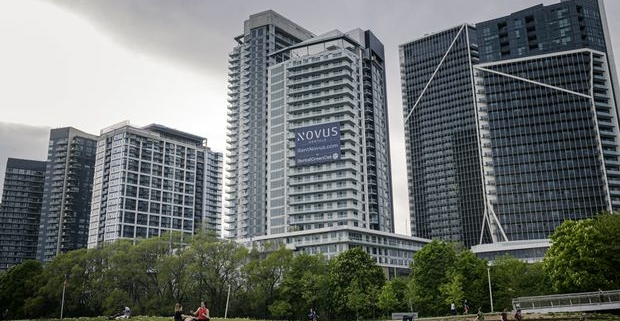
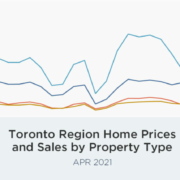
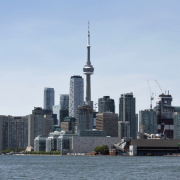


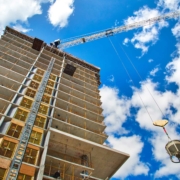

 Maziar Moini, Broker of Record - Home Leader Realty Inc.
300 Richmond St. W., #300, Toronto, ON M5V-1X2
Maziar Moini, Broker of Record - Home Leader Realty Inc.
300 Richmond St. W., #300, Toronto, ON M5V-1X2


